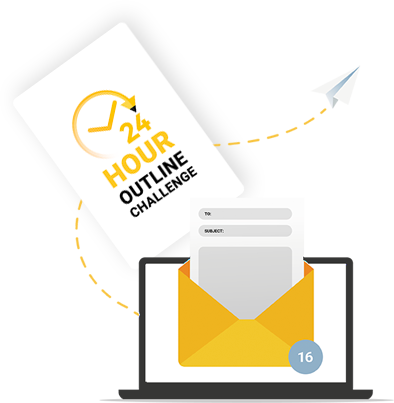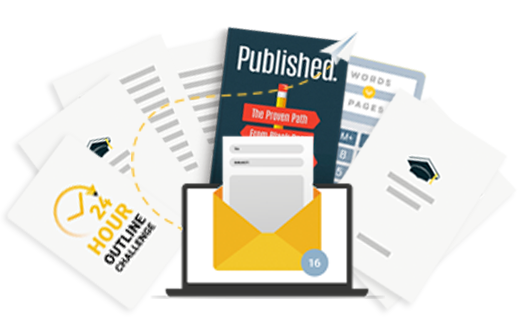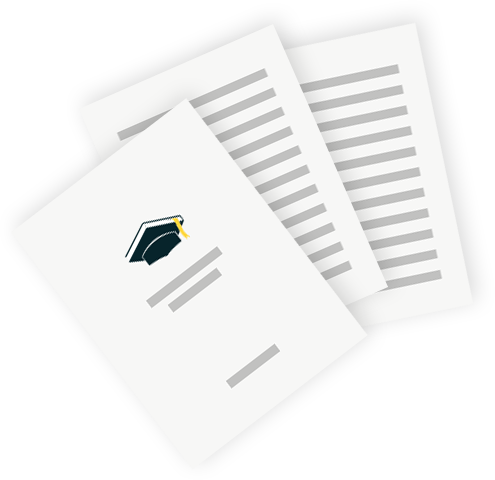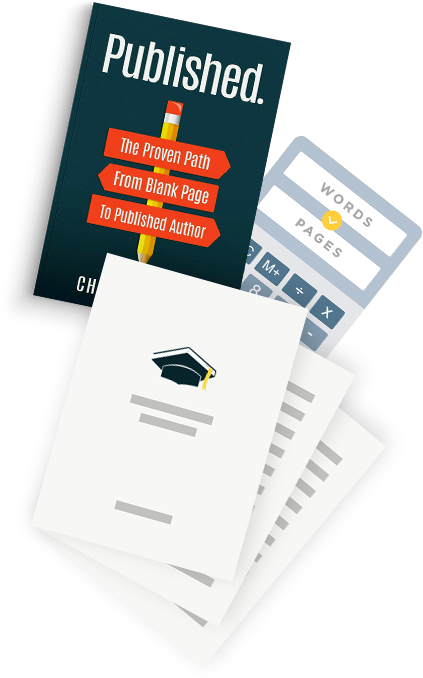Every story ever told has a narrator. Whether it’s a character, the author themself, or some unknown entity, there has to be someone (or something) telling the story in order for it to exist. There are tons of different types of narration. The basic categories of narrator are: first-person, second-person, and third-person.
First-person narration is when we see the story through the character’s eyes. It uses I/me/my pronouns.
Second-person is when the story is presented as if we literally ARE the character–it uses “you” pronouns, and this narration is typically reserved for stylistic storytelling, like in a choose-your-own adventure novel.
There are a few different types of third-person narration. Third-limited is similar to first-person, where we are limited to the perspective of one character. That means in both of these perspectives, we as readers can only see, observe, and know what the perspective character knows. Within third-limited, there are also subjective and objective narration.
Third omniscient perspective gives us a lot more information and scope than the other perspectives.
There are tons more specific narrations, like the unreliable narrator and juggling multiple points of view. For now, let’s dig into the differences, strengths, and weaknesses of the omniscient narrator. We’ll also look at examples of omniscient narrators, and we’ll discuss how and when to use that perspective.
What is an omniscient narrator?
Omniscient narration uses the “all-knowing” or “god” narrator. This narrative voice knows everything in the universe, past and future, said and unsaid. It can “head hop” into any character, read everyone’s every thought, and understand any character’s motivation. An omniscient narrator might even be self-aware of the fact that it is a narrator telling a tale. Often, omniscient narrators will address the reader and break the fourth wall.
Omniscient narrators are the easiest form of narrator to use from a storytelling perspective, because you don’t have to work around what a character would reasonably know. The god narrator knows it all, so telling a story becomes much easier, giving readers information they need to set the scene and tone of what’s to come. Well, Hannah, if it’s so easy, why do people tell stories any other way?
Using an omniscient narration puts an extra degree of separation between the reader and the character. We often describe narrative perspectives based on their closeness to the character. First-person is the closest, because the reader essentially becomes the character–we know all they know, and we experience the world and story through their eyes. Third-limited is the next closest, because we’re still limited to the character’s perspective, but we aren’t literally the character–plus third-limited often hops to different characters throughout the story.
But omniscient narrators are far-apart from the character. We aren’t looking through them, and we aren’t looking with them–we’re looking at them, and at everything else. The psychic distance between reader and character is the farthest in omniscient perspective. So while it can lead to easier storytelling, it can also make it harder to create that incredibly important reader-character connection.
Where you might have an easier time telling the story of the plot, you’ll have a harder time connecting the character with the reader.
This is just one example of the nuances between narrative perspectives, so it’s important to consider which one will serve your story and goals best.
Examples of Omniscient Narration
Let’s look at some examples of omniscient narration to solidify our grasp. The more you read, the more you can tell the difference and learn which style of using omniscient is one you want to use.
9 Books that use omniscient narrators:
Here are popular books that use omniscient narrators. Have you read any of them?
- The Road by Cormac McCarthy
- Peter Pan by JM Barrie
- The Book Thief by Markus Zusak
- The Lord of The Flies by William Golding
- Little Women by Louisa May Alcott
- Crazy Rich Asians by Kevin Kwan
- The Wormling by Chris Fabry and Jerry B Jenkins
- The Haunting of Hill House by Shirley Jackson
- Beloved by Toni Morrison switches between omniscient and third-limited narration.
Each of these books uses omniscient narration, but they each use it to accomplish different goals. Let’s look at the openers from a couple of these examples to discuss how and why they’re employing the omniscient narrator.
Written Examples of an Omniscient Narrator
Here are the opening paragraphs from The Wormling by Chris Fabry and Jerry B Jenkins:
“To tell the story of Owen Reeder–the whole story and not just the parts that tickle the mind and make you laugh from the belly like one who has had too much to drink–we have to go into much unpleasantness.
So if you are faint of heart and can’t stand bloody battles and cloaked figures in the darkness and invisible creatures (or visible ones who don’t have much of a sense of humor), and if you don’t like to cry over a story when someone you love is taken, then perhaps our tale is not for you. But if you’d like to read about a young man with seemingly no future but dreams he can barely hold in his head about a war between opponents as far apart as east is from west–one side that loves evil and seeks to kill and destroy the hearts of good people and another that wants desperately to free those good people from tyranny and injustice–and about the deepest love the heart can imagine, then we welcome you.”
And here are the opening paragraphs from Crazy Rich Asians by Kevin Kwan:
“Nicholas Young slumped into the nearest seat in the hotel lobby, drained from the sixteen-hour flight from Singapore, the train ride from Heathrow Airport, and trudging through the rain-soaked streets. His cousin Astrid Leong shivered stoically next to him, all because her mother, Felicity, his dai gu cheh–or “big aunt” in Cantonese–said it was a sin to take a taxi nine blocks and forced everyone to walk all the way from Piccadilly Tube Station.
Anyone else happening upon the scene might have noticed an unusually composed eight-year-old boy and an ethereal wisp of a girl sitting quietly in a corner, but all Reginald Ormsby saw from his desk overlooking the lobby were two little Chinese children straining the damask settee with their sodden coats. And it only got worse from there. Three Chinese women stood nearby, frantically blotting themselves dry with tissues, while a teenager slid wildly across the lobby, his sneakers leaving muddy tracks on the black-and-white checkerboard marble.”
These two examples use their own unique styles of omniscient narration. The Wormling opener is similar to many childrens’ books in its genre, directly addressing the reader like a classic fairytale. This makes the story reach through the pages to interact with kids as they read, creating a unique reader experience. That style and voice is what made it one of my favorite series to read growing up–it felt like the book was talking to me and taking me along for the adventure.
Crazy Rich Asians uses the same narrative perspective, but it is not addressing the reader–this style engages less with the reader, which could help them more easily accomplish immersion into the world. Since this book is for adults, employing the same style used in The Wormling might be annoying to read, and it might even come across as patronizing or condescending. In fact–if you browse the reviews for The Wormling, you’ll see young readers adoring it and older readers feeling like it kept them at arms’ length from the story. Comparing these two styles makes it clear that your target demographic should greatly influence the narrative voice style you choose to use for the story.
What is the difference between a limited narrator and an omniscient narrator?
Since the difference between first- and second-person narration vs omniscient is pretty obvious through the pronoun use, we’ll focus on the differences between third-limited and omniscient third.
—Third-limited subjective vs third-limited objective
Third-limited subjective narration is when the story is told through the limited observations of a specific character. Third-limited objective narration is told through the perspective of a Non Existent Character. To visualize a third-limited objective, think of the camera in a movie–we’re only seeing through that camera. We know everything happening in the shot that we can see, and we’re not in anyone’s thoughts.
Subjective is watching a scene with a character’s understanding and thoughts, objective is watching a scene unfold as an unrelated third party, while still being limited to what we can observe in that room.
—Third-limited subjective vs third omniscient
The difference between third-limited subjective and omniscient is that subjective is us seeing what the character sees and understanding what they understand, while omniscient sees and knows everything happening and knows every thought.
—Third-limited objective vs third omniscient
Third-limited objective and third omniscient are very easy to confuse with each other, but the key difference is what is known. If you’re limited to what is happening in the “room” and what you have observed in the past and are currently observing in the present, it’s third-limited objective. If you can see and know everything in the universe, it’s omniscient.
Each perspective has different uses, benefits, and drawbacks, so choose based on your intention for the story. In particular, third-limited objective narration is the weakest and trickiest, because it puts a barrier between the reader and character without the added benefit of omniscient storytelling.
How to Know if You Should Write With an Omniscient Narrator
Since the narrative perspective you choose depends on your story–how do you know which is right? Here are some things that might indicate your story is suited for an omniscient narrator.
1. If the style suits the story
One big reason authors choose to use omniscient narrators is because the style and tone suit their preferred method of storytelling, and it adds a charm to their story. A great example of this style working for a story is The Wormling series, as shown in the example above.
Styles that work well with the omniscient narrator include: fairytale stories and retellings, satire and humorous stories that employ sarcasm or facetiousness in a way that works well with an omniscient narrator, and plot-heavy or particularly complicated stories that really need the overview look all the way through.
2. If you have a complicated world and a large cast of characters
Like I said, if your plot is particularly complicated or your story for some other reason needs intricate perspectives and knowledge that a character couldn’t reasonably have, it might make sense for your story to be told with an omniscient narrator.
3. If character-reader connection is not pivotal
Characters are incredibly important in any story, but depending on your goals and how you want the reader to relate to the piece, it isn’t always necessary for a strong reader-character relationship.
If that feels true for your story, and you feel it could be best-told through the omniscient narrator, then that might be the route for you.
4. If it suits your genre and target demographic
There are certain expectations for different genres and reader ages. For example, when writing a romance novel, it almost always flips back-and-forth between the main love interests’ POV in third-person limited. Omniscient narration is often seen in children’s literature, high fantasy, and satire.
Writing in a certain genre doesn’t mean you HAVE to follow the typical scripts, but it is a consideration when choosing your narrative perspective.
The omniscient narrator can be a tough one to crack, but mastering it opens many opportunities to engage with your reader in unique ways, navigate difficult and complicated plots and worlds, and present your story with an effective and memorable style.




